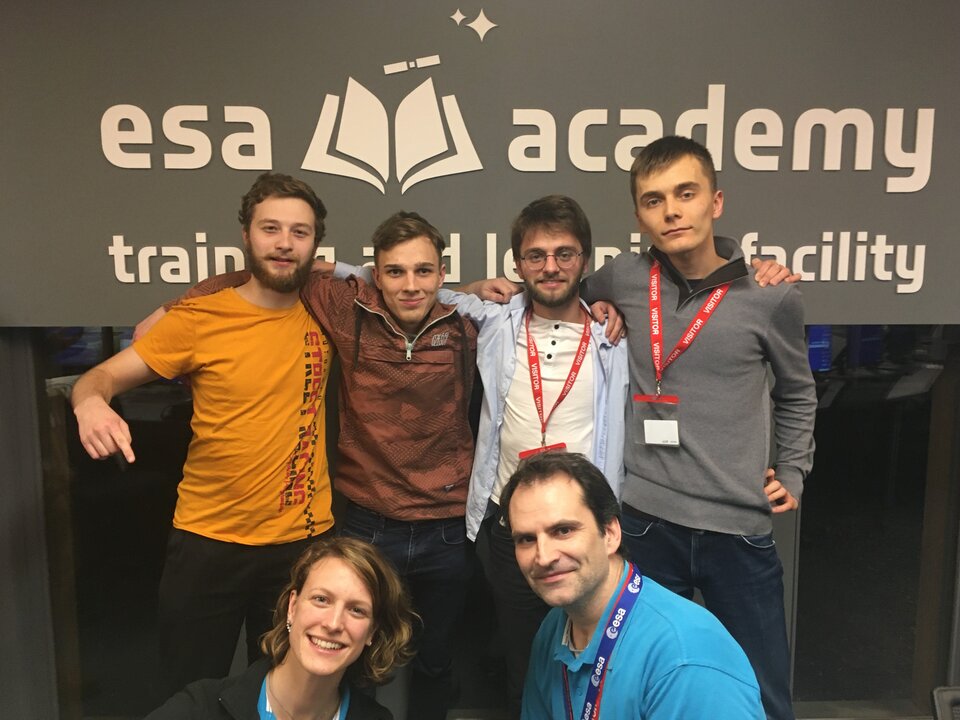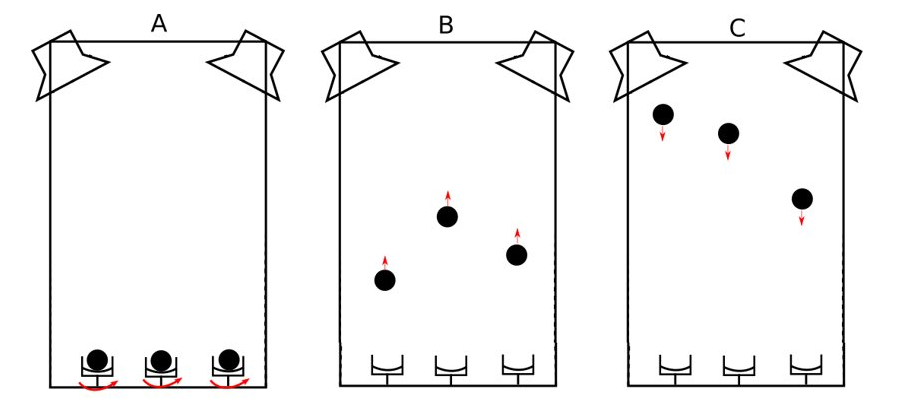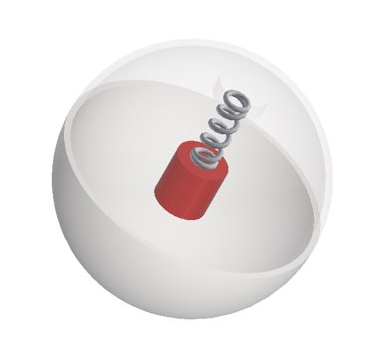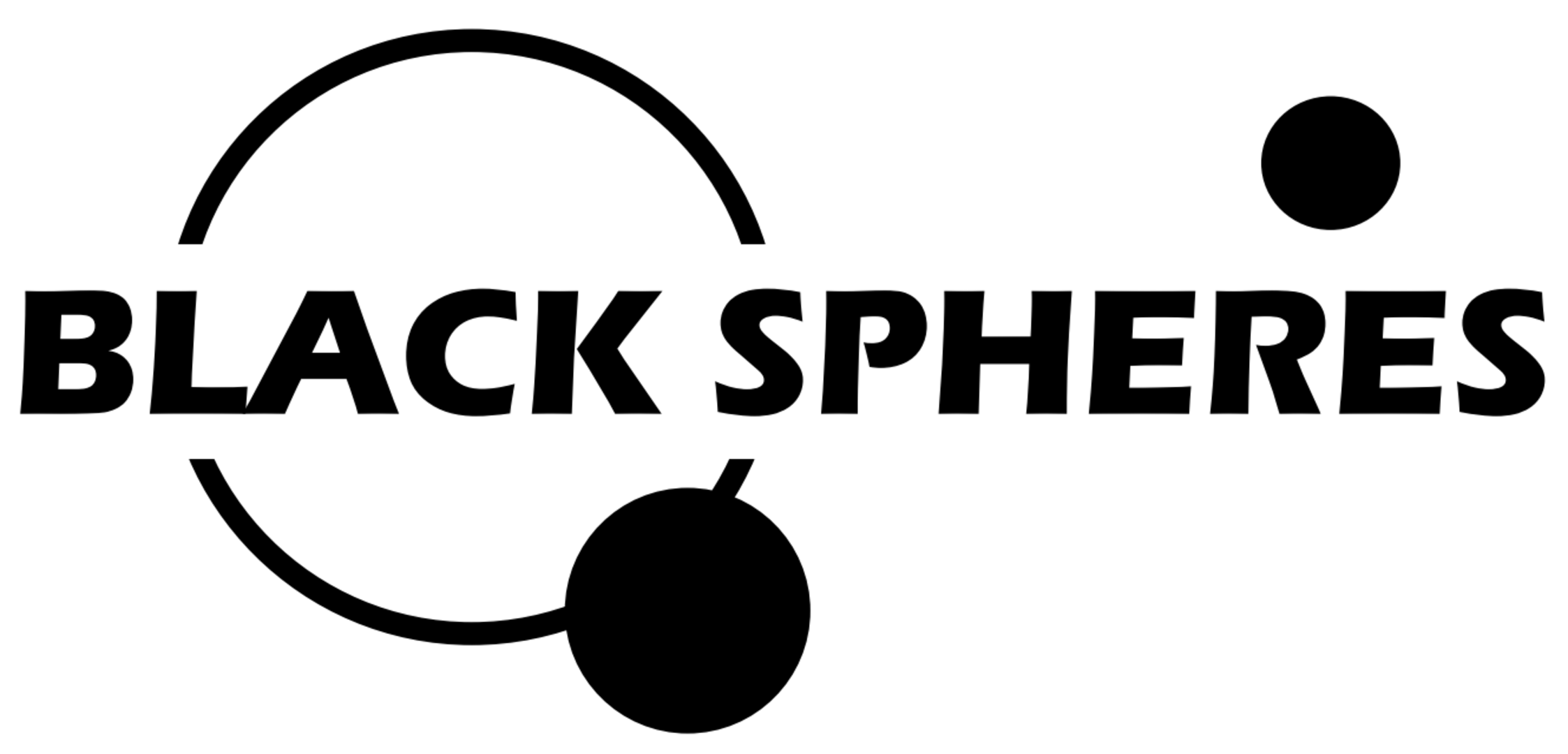Meet the teams: Black Spheres
The Black Spheres team is composed of 4 Master students from the AGH University of Science and Technology in Krakow, Poland. The aim of their experiment is to develop an algorithm that estimates physical parameters of unknown objects by observing their motion in microgravity.
Imaging of non-linear motion objects
| University | AGH University of Science and Technology, Kraków (Poland) |
| Endorsing professor |
Paweł Zagórski, PhD (UGH University of Science and Technology) |
| Team | Michał Blazejczyk, Kamil Switek, Kacper Synowiec, Kamil Maraj |

The team plans to investigate the motion of experimental objects rotating freely in microgravity conditions inside the ZARM Drop Tower’s capsule. In the absence of gravity, forces that are negligible under earth gravity suddenly become evident and observable.
The amount of space debris is constantly increasing. In the last few years, many ideas have been put forward to construct servicing satellites able to repair or refuel other spacecraft on orbit. If the object that requires servicing is damaged, it may rotate freely in an uncontrolled manner. To approach such objects, factors that influence its rotational dynamics such as centre of mass and moments of inertia should be calculated. This information, crucial for the servicing satellite to plan the proper trajectory, might be unavailable a priori because of sloshing fluids, leaks or broken objects floating freely inside the damaged satellite.

The proposed experiment consists of three phases: spinning up the experimental “black spheres” to a specified angular velocity, releasing them and observing their motion with a system of cameras.
The “black sphere” will in fact consist in a sphere with mass on a spring inside.
The non-rigid body dynamics imposed by linear motion of the mass inside the sphere will affect its translational and rotational motions that will be recorded by cameras.

The information about position and orientation of the object, reconstructed from the camera recordings will be an input for the model algorithm. The latter will predict the object’s motion as well as determine its physical parameters.
The expected outcome of the experiment is to answer if it is possible to reconstruct the physical parameters of objects with non-rigid body dynamics. The output of the estimation algorithm will be compared with the spheres’ properties, precisely measured in the laboratory. Furthermore, satellites are commonly non-rigid bodies (due to leftovers of fuel, internal movable or elastic objects), so such an algorithm could improve predictions by incorporating the effects of varying mass distribution. Sharing the progress and results of the experiment among general public would help raise awareness about the problem of space debris.


